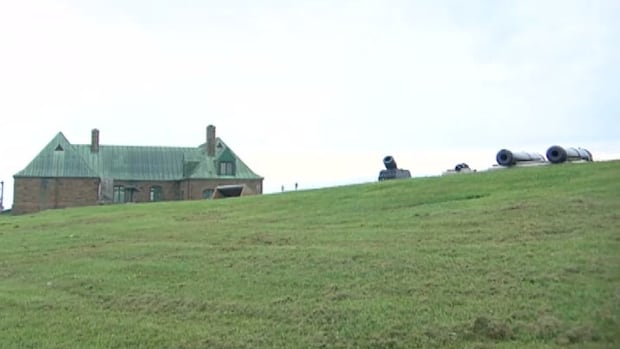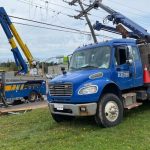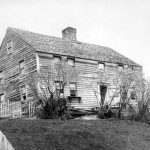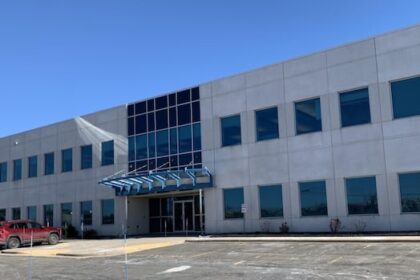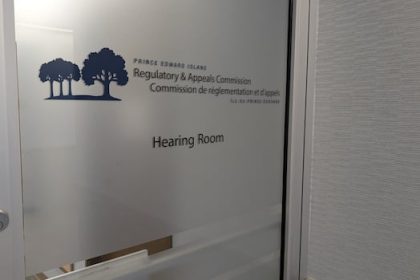New BrunswickParks Canada is raising the alarm over unauthorized archaeological activities at Fort Beauséjour–Fort Cumberland National Historic Site and Beaubassin and Fort Lawrence National Historic Sites.Staff have discovered 30 new holes in the ground each day over the past few weeksJordan Gill · CBC News · Posted: Oct 07, 2025 5:00 AM EDT | Last Updated: 3 hours agoStaff at Fort Beauséjour–Fort Cumberland National Historic Site in New Brunswick have encountered a lot of newly dug holes over the past few weeks. (CBC)Parks Canada is raising the alarm over unauthorized archaeological activities at national historic sites straddling the border between New Brunswick and Nova Scotia, saying they are finding about 30 new holes in the ground each day.Tim Leblanc Murphy, a spokesperson with Parks Canada, said people seem to be using metal detectors and digging up artifacts at both Fort Beauséjour–Fort Cumberland National Historic Site in New Brunswick, and Beaubassin and Fort Lawrence national historic sites in Nova Scotia.He said this has been an ongoing problem at the sites, but the activity has drastically increased over the past couple of weeks. The park is now tracking about 30 new holes a day, each about measuring 30 to 45 centimetres deep.”It’s just accentuated over the past weeks to a point where we’re quite alarmed,” said Leblanc Murphy. “Our staff has arrived pretty much daily to [newly] dug holes. We’ve detected activity in the night. We even found a shovel.”WATCH | ‘You’re probably doing more harm than good,’ says Parks Canada:Illegal digging at historic sites is on the rise. Parks Canada says our history’s at riskParks Canada is raising the alarm over unauthorized archaeological activities at national historic sites straddling the border between New Brunswick and Nova Scotia. The Beauséjour Marsh area near Aulac has been a site of huge historic significance for millennia.Both national historic sites show signs of many thousands of years of Indigenous activity before the French founded a community at Beaubassin in 1671 and then built Fort Beauséjour in 1751.The British displaced the residents of Beaubassin in 1750 and built Fort Lawrence on the site.The markers on this map show the locations of Fort Beauséjour–Fort Cumberland National Historic Site in New Brunswick (at left) and Beaubassin and Fort Lawrence national historic sites in Nova Scotia (at right). (Parks Canada)Fort Beauséjour was captured by the British in 1755 and renamed Fort Cumberland. The site of a small skirmish during the American Revolution, it was a part of British North America’s defences during the War of 1812 and was declared a national historic site in 1920.While a lot of archaeological work has been tackled at the parks already, the long and colourful history means there are many more artifacts hidden under the soil.”You can imagine the French and the British battling back and forth. Those fields, I’ve been told, are likely littered with cannonballs,” said Leblanc Murphy.Leblanc Murphy pointed out that it is a crime to dig up artifacts at a national historic site without permission, and legislation sets out heavy fines for doing so. (CBC)Growing concernAmateurs digging up artifacts at historical sites is a growing concern for those charged with protecting history.Barry Gaulton, an archaeology professor at Memorial University in St. John’s, N.L., said he’s encountered the same issue at sites in his province, specifically the Colony of Avalon in Ferryland.In common with what’s happening at Fort Beauséjour–Fort Cumberland, someone has been coming in the night, digging holes, and taking away what they’ve found.Barry Gaulton, an archaeology professor at Memorial University in St. John’s, said he’s hearing about more and more incidents of people digging up artifacts at historical sites. (Henrike Wilhelm/CBC)”There once was perfectly intact cobblestone pavement from the 1620s and 1630s,” said Gaulton. “Someone had gone in there with a metal detector and detected precious metals underneath those cobbles and proceeded then to remove the cobbles and to excavate down through.”He said the culprits removed what they found and left.Gaulton said he believes many metal detector operators who go into these sites are just people with a keen interest and love of history who enjoy using the devices.But he said a lot of history can be lost when digs are done improperly and without permission.Information Morning – Moncton8:12Parks Canada reports a spike in illegal metal detecting and possible looting at national historic sites in Tantramar and Cumblerland county.Tim Leblanc Murphy is a partnering, engagement and communications officer with Parks Canada.”When someone comes with a metal detector and digs up through these intact layers, the context is lost,” said Gaulton. “The importance and the story behind these objects are lost when someone comes and simply removes them from the ground, removes them from the context in which they were deposited. That’s the real issue that archaeologists have with metal detectors.”A costly crimeIt is a crime to dig up and remove artifacts from one of Canada’s 1,004 national historic sites, 171 of which are administered by Parks Canada.The Canada National Parks Act sets out fines starting at $5,000 for a first offence on a summary conviction, going up to $300,000. Fort Beauséjour–Fort Cumberland became a national historic site in 1920. (Library and Archives Canada)The New Brunswick site hasn’t had to levy a fine in the past; Leblanc Murphy said a friendly warning not to do it again has generally sufficed. This time may bring a different response, though.”Like I said, it’s 30 holes a day for the past few weeks and in the middle of the night … This is kind of likely someone who knows what they’re doing,” said Leblanc Murphy.Gaulton said he hopes the increase in unauthorized digs are a one-off event and not indicative of a growing trend.”A lot of people do understand the importance of these sites and the importance to protect these sites for future generations,” he said.ABOUT THE AUTHORJordan Gill is a CBC reporter based out of Fredericton. He can be reached at jordan.gill@cbc.ca.With files from Information Morning Moncton
Parks Canada warns against unauthorized digs at parks along N.B.-N.S. border
